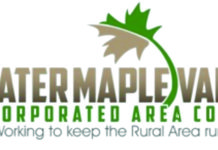On Monday, May 6, the Area Council held its monthly meeting and discussed the ramifications of the recent State Supreme Court’s Hirst decision that water is not legally available if a new well would impact a protected river or stream, or an existing senior water right. Guest speakers were from the State Department of Ecology (DOE), the Center for Environmental Law & Policy (CELP), and King County.
Watershed Restoration & Enhancement (WR&E) Committees
In response to the State Legislation ESSB 6091, the “Streamflow Restoration” law (https://ecology.wa.gov/Water-Shorelines/Water-supply/Streamflow-restoration), DOE has created Watershed Restoration & Enhancement (WR&E) Committees for eight of the Water Resource Inventory Areas (WRIA) – essentially, watersheds. Our area consists of two WRIAs: 8 (Cedar/Sammamish) and 9 (Green/Duwammish). Watershed Maps can be found at: https://kingcounty.gov/services/environment/ watersheds.aspx.
Center for Environmental Law & Policy (CELP)
Dan Von Seggern, a former academic scientist, is Staff Attorney for CELP, a statewide organization whose mission is to protect, preserve and restore Washington’s waters through education, policy reform, agency advocacy, and public interest litigation. Mr. Von Seggern serves on the WRIA 8 WR&E Committees. CELP also serves on the WRIA-9 WR&E Committee.
Mr. Von Seggern explained that State law on “Streamflow Restoration” (ESSB 6091/RCW 90.94) helps protect water resources while providing water for rural residents reliant on permit-exempt wells. The new WR&E Committees are tasked to develop or update plans that offsetpotential impacts to instream flows associated with new permit-exempt domestic water use. The new law only applies to wells drilled after January 19, 2018, and does not affect existing permit-exempt wells.
By law all waters in the state belong to the Public, but a person may obtain the right to use water for a beneficial use (e.g., irrigation or industrial use). Each water right has a priority date based on the time the right was applied for or when water was first put to use. Prior appropriation is the key that governs water rights under the “first in time, first in right” principle. A more junior user may not withdraw water that would interfere with a more senior right-holder’s water use.
The establishment of instream flows is an element of water management to help maintain healthy and diverse ecosystems. An instream flow is a specific flow level measured at a specific location in a given stream and adopted as a rule by DOE. Instream flows have priority dates as of the date that they are adopted. When actual streamflows drop below the adopted instream flow levels, junior water rights (those established after the instream flow) can be temporarily interrupted to keep the water in the stream. Setting instream flows protects the river from newwithdrawals that would harm instream resources; however, it does not affect existing (senior) water rights. Instream flows are thus prospective only, and cannot put water back in streams.
Permit-exempt wells do not require a permit, but they are part of the priority system and may not impair senior water rights. Each is limited to withdrawals of 5,000 gallons per day (gpd). The Hirst decision required counties to make an independent decision about legal water availability, and a well’s potential impact on senior water rights, before issuing a building permit for a home that would rely on a well.
The State Legislature passed the Streamflow Restoration law in response to the Hirst decision to clarify how counties issue building permits for rural homes that use a well and to offset water withdrawals from new permit-exempt wells. Mitigation techniques (aquifer recharging, enhancing habitat, etc.) can help offset such withdrawals. The WR&E Committees are looking at such mitigation and off-sets. However, it must be recognized that one of the major variables facing us in the future is how Climate Change will make things worse as summers get hotter and rainfall patterns, quantities, and frequencies change from historical norms.
State Department of Ecology (DOE)
DOE’s Stephanie Potts, Streamflow Restoration Implementation Lead, chairs both the WRIA 8 and 9 WR&E Committees. As part of the State law on “Streamflow Restoration” (ESSB 6091/RCW 90.94), Ms. Potts stated planning is underway in the 15 watersheds impacted by the Hirst decision. Such planning is being led either by locally led watershed planning groups or the new WR&E Committees comprised of representatives from local governments, tribes, and interest groups. They are tasked to update or develop plans that help fish by protecting and improving rivers and streams in their respective watersheds.
Each WR&E Committee is looking at a 20-yr window (2018-2038) of expected water use from new permit-exempt wells and identifying projects to offset that use, while achieving a net ecological benefit. The plans are due to DOE by June 30, 2021. The law also invests $300 million over the next 15 years in projects that will help fish and streamflows. Watershed planning groups will recommend proposals for funding by Ecology to achieve this.
For more in formation see: https://fortress.wa.gov/ecy/wrdocs/WaterRights/wrwebpdf/essb6091- dpew-map.pdf.
King County
King County’s Karen Wolf Senior Policy Analyst in the Executive’s Office, stated there is a direct link between land use and water availability and should the County determine water is not legally available for a new use, it would not be able to approve a building permit. New permit-exempt wells require payment of a $500 fee. The maximum withdrawal is 950 gpd per connection, on an annual average basis. During drought, this may be curtailed to 350 gpd per connection for indoor use only. Building permit applicants must adequately manage stormwater onsite.
In response to the Hirst decision the County conducted a Water Availability and Permitting Study to determine if any modifications are needed to the Comprehensive Plan, King County Code and County practices related to ensuring availability and adequacy of water during the development permit process. See: https://www.ezview.wa.gov/Portals/_1962/images/WREC/WRIA08/0005 REPORT – Water Availability and Permitting Study.pdf.
King County’s Eric Ferguson, Water Quality Planner and Hydrogeologist in the Department of Natural Resources and Parks, stated the County, in trying to ascertain the magnitude of potential impacts, first reviewed recent (2007-2017) permit records in each watershed to determine the number of newly drilled water wells.
Of ~1,200 new water wells, ~900 were drilled in the Rural Area with ~300 in the Urban Area. When looking at existing Water District Service Areas, ~900 of these ~1200 new water wells fall within district boundaries meaning that water wells are being installed where public water is available. The Water Availability and Permitting Study document contains a flowchart that helps clarify the hierarchy of obtaining water for a parcel.
Looking at the WRIA-8 data, there were ~320 new water wells drilled with most in the Rural Area (~250). Approximately 270 fall within existing Public Water District service areas, meaning that Public water could have been available to these homes. Looking at the WRIA-9 data, there were ~350 new water wells drilled with most in the Rural Area (~250). But, again, ~200 fall within existing Public Water District service areas, meaning that Public water could have been available to these homes. Public Water Districts already provide water to some Rural Area homes and could extend water to more, as evidenced by the County’s mapping and data research. However, the Area Council noted that there are financial impacts, as hooking up to Public water can cost more than drilling a well.
Questions & Answers
Several questions were asked of the speakers; (1) If you need to drill a new well if your well runs dry, are you able to? The answer is: “Yes.” (2) Do Public Water Districts, which have senior rights, also have unlimited water rights? The answer is: “No, there are caps to their rights, but many are well under those caps.” (3) Who represents Rural Area residents on the WR&E Committees? The answer is: “Water Basin Stewards, who are part of a team of Department of Natural Resources & Parks, Water and Land Resources Division professionals knowledgeable about community and natural resources in specific King County watersheds.”
More information can be found on the Area Council’s web site: www.gmvuac.org.
VISION 2050
The Area Council led an effort of King County Rural Area Unincorporated Area Councils (UACs) and Unincorporated Area Associations (UAAs) to review and comment on the Puget Sound Regional Council’s (PSRC)’s draft VISION 2050 Supplemental Environmental Impact Statement (SEIS), an update to VISION 2040, released in 2008, and currently the region’s growth management, economic, and transportation strategy.
VISION 2050 is an integrated, long-range vision for the future that lays out a strategy for maintaining a healthy region — promoting the well-being of people and communities, economic vitality, and a healthy environment. It is intended to guide growth to support thriving communities, a strong economy and a healthy environment.
The draft SEIS evaluates the environmental effects of three regional growth alternatives to accommodate another 1.8 million more people and 1.2 million new jobs by 2050: Stay the Course (No Action Alternative), Transit-Focused Growth, and Reset Urban Growth.
On April 29 a joint UAC/UAA set of comprehensive comments were submitted to the PSRC that we fully support the broad goals of the Growth Management Act (GMA) to: Manage urban growth; Protect agricultural, forestry, and environmentally sensitive areas; Reduce sprawl; and Encourage efficient multimodal transportation systems. Our comments also emphasized that public policy can pro- vide direction and incentives for communities to grow in ways that will invite personal lifestyle decisions consistent with the region’s goals. Finally, our comments firmly supported policies that strive to keep the Rural Area rural, including recognizing Urban Growth Boundaries are intended to be permanent, not fungible, and that Rural Areas provide benefits in many ways for everyone. Please more in- formation and the joint UAC/UAA set of comments, see the Area Council’s PSRC VISION 2050 web page: www.gmvuac.org/puget-sound-regional-council.
The PSRC is the State-designated and Federally recognized Regional Planning Organization for the 4-county region—King, Pierce, Snohomish, and Kitsap. More information on the PSRC can be found at: www.psrc.org.
Citizens’ Survey
The Area Council conducts Biennial Citizens’ Surveys and elections online. All persons living in unincorporated King County within the Tahoma School District boundaries (i.e., outside of any City limits) are invited to participate. The survey addresses issues that affect you, your family, and your neighborhood, including planning, zoning, development, traffic, economics, water, and sewage.
Your individual input is needed and valuable, as it helps to inform the Area Council on issues important to you. All responses are kept confidential (although overall responses will be collectively summarized for review and analysis).
The Area Council welcomes your participation in helping us better serve you and our community. You can access the Survey online at: www.gmvuac.org/citizen-surveys. The VOICE of the Valley and the Covington/Maple Valley Reporter will publish notice of our survey online and in print.
As part of the Survey, you also may express your interest in becoming either a member of the Area Council or a non-member-participant on any of its various Committees.
Upcoming Meetings Area Council Monthly Meeting: Monday, June 3, 7 – 9:30 PM, at the Maple Valley Fire Station located at the SE corner of SE 231st St & SR-169 intersection across from the Police Precinct. All members of the Public are welcome. Each meeting begins with an open Public Comment period.
Annual King County Community Service Area Meeting: Tuesday, June 18, 7 – 9:30 PM, at the Hobart Church, located at the 27524 SE 200th St. King County officials will be on hand to discuss local issues of importance followed by an extensive question and answer period. All members of the Public are welcome.
Your Area Council serves as an all-volunteer, locally elected advisory body to King County on behalf of all rural unincorporated area residents living in the Tahoma School District. Please see the Area Council’s web site: www.gmvuac.org.
The Area Council has three open positions. If you have an interest in joining, please indicate same, through our Citizens’ Survey or attend one of our meetings and express such interest for consideration by the Area Council.



